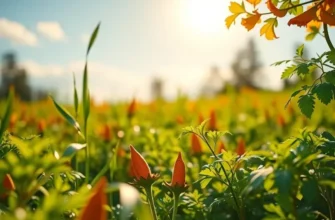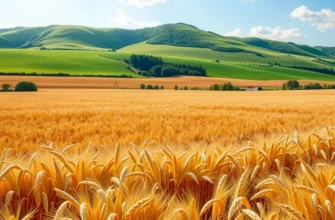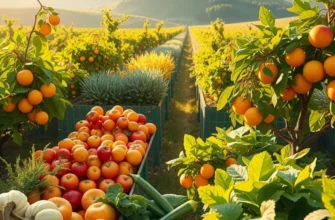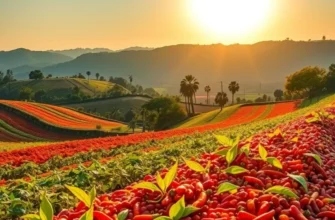The Andes mountains cradle a diverse and rich tapestry of culinary traditions, shaped by centuries of history, geography, and culture. From the high altitudes to the fertile valleys, the region offers a bounty of ingredients and unique cooking techniques that are a feast for the senses. As food enthusiasts and culturally-curious readers, let’s journey through the Andes and savor the unique flavors, vibrant dishes, and the stories that connect generations in this remarkable region.
Roots of the Andean Palate: Ingredients and Influences

The Andean cuisine is a vibrant tapestry woven with history, geography, and community spirit. Central to this culinary tradition are ingredients that have sustained Indigenous cultures for centuries. The potato, native to this mountainous region, claims a staggering diversity with over 4,000 varieties. Bolstering the Andean diet, these tubers showcase the adaptability and resilience of the people who cultivate them, often at altitudes up to 4,000 meters.
Quinoa, often dubbed a superfood for its nutritional profile, was a staple of the Incan Empire. Rich in protein and essential amino acids, quinoa fueled countless generations. Its cultivation reflects agricultural practices honed over millennia, where nature and human ingenuity meet.
Herbs like huacatay (black mint) and aji amarillo (yellow chili pepper) contribute unique flavors to staple dishes. Huacatay’s pungent aroma imparts an earthy taste, while aji amarillo provides a fruity heat. These ingredients link the table to traditional medicine, showing their integral role in both health and cuisine.
Beyond the key staples, Andean cuisine bears the marks of varied cultural influences. Spanish colonization introduced new animals and plants, irrevocably altering local diets. Chicken, beef, and pork became common, enriching traditional preparations like stews. Yet, these adaptations did not erase the Indigenous essence; rather, they melded to create hybrid dishes such as locro, a hearty stew combining Indigenous potatoes and Spanish beef.
This culinary intermingling is evident in ceviche, traditionally a coastal dish transformed with Andean elements. The addition of sweet potatoes and cancha (toasted corn) demonstrates a fusion of terrain and taste, elevating the simple citrus-marinated fish to a cultural emblem.
Communal cooking techniques play a vital role in preserving traditions. Pachamanca, a ceremonial dish cooked underground, utilizes hot stones and local herbs to create a feast for communal gatherings. This method honors Pachamama, the Earth Mother, by emphasizing harmony with nature.
The importance of these traditions remains strong in contemporary Andean society. Preserving biodiversity and embracing sustainable practices ensure that cultural integrity and nutritional adequacy coexist. This mirrors principles of eco-smart kitchen initiatives found globally, as discussed in the eco-smart kitchen storage guide.
Thus, the Andean palate is more than taste and texture; it’s an identity. By understanding the roots and influences of its ingredients, one appreciates the cultural continuity and community resilience embedded in every dish.
Celebrating Flavors: Signature Dishes of the Andes

Embarking on a flavor adventure, the Andean culinary landscape is a vibrant tableau of traditions and innovations. Each signature dish tells a tale intricately tied to the land and its people. Among these, Ceviche stands out, its roots deep in coastal regions. This dish features fresh fish marinated in citrus juices, typically lime, which “cooks” the fish with its acidity. Accompanied by onions, chili peppers, and cilantro, Ceviche varies widely across the Andes. In Peru, sweet potato often balances its tangy zest, while in Ecuador, oranges lend a sweeter note.
Transitioning from the coast to the highlands, Pachamanca offers a profound connection to the earth. This traditional dish involves marinating meats in local herbs and spices, then slow-cooking them underground with hot stones. The term “Pachamanca” translates to “earth pot”, highlighting its unique preparation method that symbolically honors the Andean deity Pachamama, Mother Earth. Each bite is not just a taste of ingredients like chicken, pork, or lamb but a celebration of agricultural techniques dating back centuries. The communal preparation of Pachamanca is often a festive activity, reflecting the deeply ingrained social customs surrounding food in Andean cultures.
The rich highland diet also includes *Quinua, an ancient grain that sustains the “Chasquis,” Incan messengers, due to its high nutritional value. Today, it remains a staple, celebrated in soups, stews, or even as a side dish. Rocoto Relleno, another highland favorite, showcases the unique heat of rocoto peppers. These peppers are stuffed with spiced meats and vegetables, often topped with cheese and baked. The bright red peppers serve as a nod to the Andean fondness for bold, hearty flavors.
Traveling further into regional variations, the Llapingacho in Ecuador melds mashed potatoes and cheese into thick patties, typically served with peanut sauce. This dish highlights the cross-regional love for potatoes, which account for thousands of indigenous varieties cultivated over millennia.
When discussing Andean culinary traditions, it’s essential to consider the sustainability of food practices. Andean cultures traditionally embrace eco-conscious methods, a topic intriguing for modern-day kitchens looking to reduce waste. Learn more about eco-smart kitchen strategies that connect the past with future-forward practices.
Every dish is a connection to the landscape, telling stories passed from generation to generation. From the seas to the mountains, Andean cuisine invites exploration of flavors that continue to captivate and inspire.
Final words
The culinary traditions of the Andes are a vibrant tapestry, interwoven with the diverse histories, cultures, and landscapes of this majestic region. Each dish reflects not only the local ingredients but also the stories and traditions passed down through generations. To truly appreciate Andean cuisine is to savor the flavors that connect the past with the present, recognizing the deep respect for nature and community. As you explore these culinary delights, you are not just tasting food; you are partaking in a rich cultural legacy that continues to thrive and inspire.








